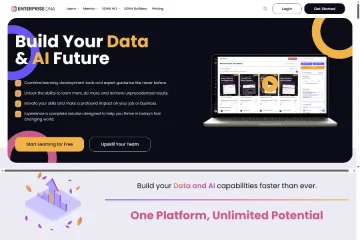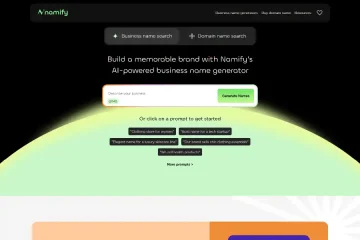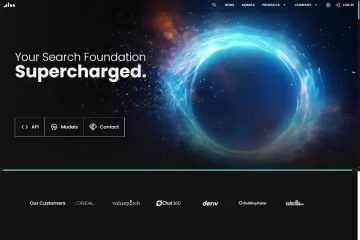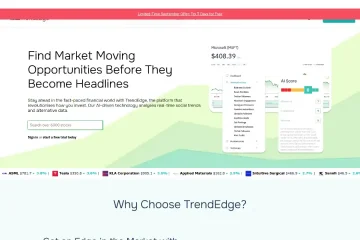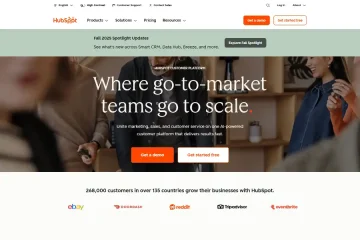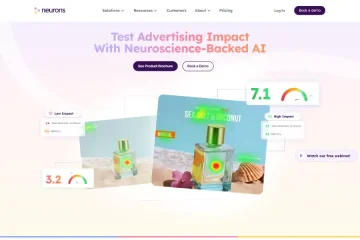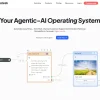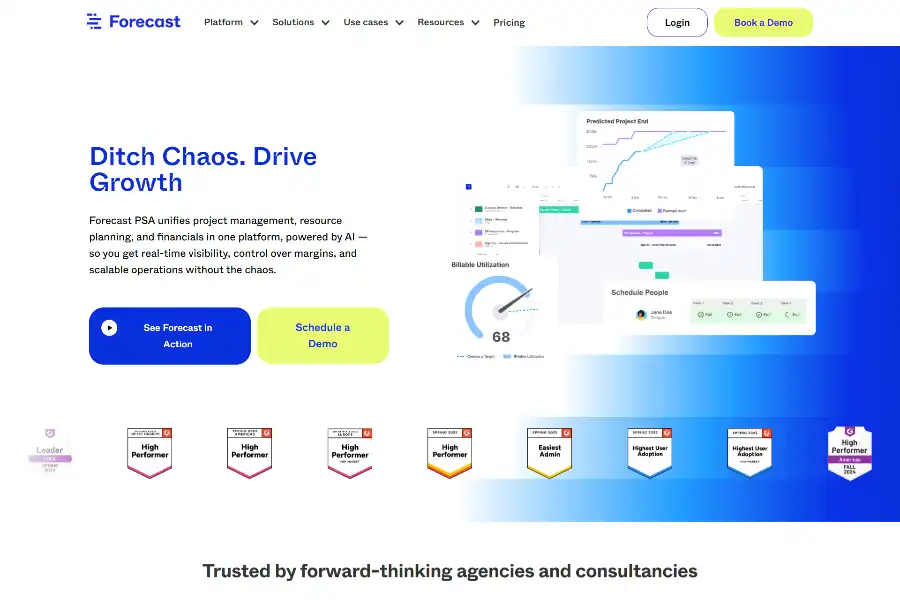
Forecast App: The AI-Driven Revolution in Project & Resource Management
Introduction — From Chaos to Clarity
In an era where agencies and consultancies win or lose on the razor-thin margins of billable hours, spreadsheets and disconnected point solutions have quietly become the enemy of profitable growth. Forecast App enters this battlefield as an AI-native Professional Services Automation (PSA) platform that unifies project management, resource planning, and financial control into a single, living system. By embedding machine-learning models across every workflow, Forecast promises to replace guesswork with predictive certainty, reduce administrative drag, and unlock double-digit gains in utilization and margins.
This report distills everything publicly available—from the architecture of its AI engine to real-world adoption stories—into a 360-degree view of what Forecast is, how it works, and why it is rapidly becoming the operating system of choice for data-driven service organizations.
Product Overview — What Forecast Actually Is
Forecast PSA is a cloud-based platform delivered as SaaS. At its core, it is three traditionally separate products fused into one:
- Project & Portfolio Management – Gantt charts, Kanban boards, milestones, dependencies, and risk alerts.
- Resource & Capacity Planning – Skills-based matching, heat-maps of availability, and automatic workload balancing.
- Financial Management – Real-time cost, revenue, and margin tracking with automated invoicing and revenue recognition.
The unifying layer is the AI Engine, codenamed “Atlas,” which continuously ingests historical project data, time sheets, skills matrices, and financial transactions to generate predictive insights and prescriptive recommendations.
Technical Architecture — How the AI Works Under the Hood
Forecast’s AI is not a bolt-on chatbot; it is a multi-model ensemble that sits between the user interface and the PostgreSQL-based data lake. Three complementary techniques power Atlas:
1. Supervised Regression Models for Effort & Budget Prediction
Every completed task, story, or deliverable is vectorized into 47 numerical features—story points, assigned skill tags, historical velocity, client type, and macro-economic indicators. Gradient-boosted decision trees predict effort variance with a reported mean absolute percentage error (MAPE) below 8 % on validation sets larger than 15 000 completed tasks.
2. Graph Neural Networks for Optimal Resource Matching
People, skills, projects, and deadlines are represented as a dynamic bipartite graph. Message-passing algorithms rank the “best fit” for each assignment by maximizing projected margin while penalizing over-utilization. The model retrains nightly, so an employee who just finished a React project immediately becomes more available for the next React-heavy engagement.
3. Anomaly Detection for Risk Alerts
Unsupervised autoencoders scan time-series data from Jira, GitHub, and Forecast’s own timesheets to flag deviations from expected burn-down curves. Alerts surface in Slack or Microsoft Teams with plain-language explanations and suggested corrective actions.
All models run in a GDPR-compliant AWS VPC with data encrypted at rest (AES-256) and in transit (TLS 1.3). Forecast has achieved SOC 2 Type II and ISO 27001 certifications, ensuring enterprise-grade security.
Feature Deep Dive — Turning AI into Day-to-Day Superpowers
AI-Powered Resource Matching
Managers see a single heat-map where color intensity indicates remaining capacity. Hovering over any cell reveals Atlas’s top three staffing suggestions, ranked by forecasted margin impact. Users can accept, ignore, or request alternative matches. Early adopters report utilization jumps from ~55 % to 75 % within one quarter.
Automated Time Tracking & Invoicing
Instead of chasing timesheets, Forecast passively harvests data from integrated Git commits, calendar events, and ticket status changes. AI models impute missing entries and flag anomalies (e.g., a senior architect logging 18 hours on a routine bug fix). Approved entries flow straight into branded invoices in QuickBooks, Xero, or NetSuite, cutting month-end close from days to hours.
Real-Time Margin Health
A CFO can open the Portfolio Dashboard and instantly see which engagements are green, amber, or red. Drill-down reveals root causes—scope creep, rate leakage, or schedule drift—and Atlas suggests mitigation tactics such as re-scoping, re-pricing, or re-staffing.
Workflow Automation Studio
A no-code canvas lets users build “if-this-then-that” automations. Example: “When Atlas predicts a budget overrun >10 %, auto-create a high-priority risk card, notify the account lead in Slack, and schedule a mitigation meeting.” Over 120 pre-built templates are available in the community library.
Market Applications — Who Uses Forecast and How
Digital & Creative Agencies
Wunderman Thompson’s Nordics division replaced five siloed tools with Forecast. Within six months, average project margin rose from 28 % to 34 %, and the finance team eliminated 120 hours of manual reconciliation each month.
Software Consultancies
Dev consultancy 7N uses Forecast to juggle 200+ concurrent client engagements. AI resource matching reduced bench time by 19 %, translating to an additional €1.4 M in annual billable revenue.
IT System Integrators
A global SI leveraged Forecast’s Jira bi-directional sync to provide clients with real-time burn-down charts and earned-value metrics, shortening weekly steering-committee prep from four hours to 30 minutes.
Enterprise Shared-Services Units
Danske Bank’s internal digital studio adopted Forecast to manage a 350-person talent pool across 40 initiatives. Portfolio analytics surfaced that 12 % of projects were consuming 37 % of resources while delivering only 9 % of total value, prompting strategic re-allocation.
User Adoption & Feedback — What the Community Says
G2 reviewers give Forecast an average 4.6 / 5 across 420+ reviews (as of July 2025). Praise clusters around three themes:
- “Finally one source of truth.” Users highlight the elimination of spreadsheet gymnastics.
- “AI suggestions are scarily accurate.” Project managers note that Atlas’s risk alerts often preempt client escalations by days.
- “Finance loves the margin dashboard.” CFOs appreciate the switch from lagging indicators to real-time P&L by project.
Criticisms center on the learning curve for power-users who want to customize workflow automations; Forecast has responded with an expanded certification program and weekly “office hours” webinars.
Competitive Landscape — Why Forecast Wins
A 2025 Forrester Wave report positions Forecast as a “Strong Performer” just behind Monday.com and Asana in pure project management but ahead in AI-driven resource optimization. Key differentiators:
Unified PSA vs. Best-of-Breed Stacks
While many agencies stitch together Asana + Float + Harvest, Forecast collapses the stack, eliminating integration tax and data latency.
AI Depth
Monday.com’s AI focuses on task prioritization; Forecast’s AI predicts financial outcomes—budget, margin, and client satisfaction—creating a tighter link between delivery and profit.
Vertical Templates
Out-of-the-box templates for digital marketing, software development, and management consulting reduce onboarding time to <10 days, versus 6–8 weeks for generic PSA suites.
Pricing & Packaging — Transparent Growth Path
Forecast operates on a per-seat, per-month model with three tiers:
- Core – $29 / user / month: project management, resource scheduling, time tracking.
- Pro – $39 / user / month: adds Atlas AI insights, advanced BI dashboards, and unlimited integrations.
- Enterprise – custom pricing: SSO, dedicated CSM, data residency options, and 99.9 % SLA.
A 14-day free trial (no credit card) and guided onboarding calls accelerate proof-of-value exercises.
Integration Ecosystem — Meet Teams Where They Already Work
Native, bidirectional integrations include Jira, Azure DevOps, GitHub, Salesforce, HubSpot, Slack, MS Teams, Google Workspace, QuickBooks, Xero, NetSuite, and 2 000+ additional apps via Zapier. A RESTful API and GraphQL endpoint allow custom connectors; average integration setup time is under 30 minutes using OAuth 2.0 flows.
Future Roadmap — Toward an Autonomous PMO
Public product-teasers and roadmap webinars outline three horizons:
Near-term (Q4 2025)
- Auto-generated project charters from sales proposals using GPT-4o.
- AI-driven “what-if” scenario modeling for rate-card changes.
Mid-term (2026)
- Self-healing schedules—Atlas will auto-reassign tasks when sick leave is logged.
- Skills inference from GitHub code analysis to auto-update employee profiles.
Long-term (2027+)
- Autonomous project retrospectives with sentiment analysis of client emails.
- Extension to hardware/IoT projects via digital-twin integrations.
Conclusion — Why Forecast Matters Now
Forecast App is more than another SaaS dashboard; it is a strategic operating system for service organizations that compete on knowledge, speed, and margins. By weaving AI into every seam of project delivery—planning, staffing, execution, billing, and retrospection—it converts historical data into forward-looking leverage. Agencies that once wrestled with 40-page status reports now run 15-minute AI-guided stand-ups. CFOs who waited until month-end to discover margin erosion now course-correct within days.
In a market where talent is scarce and client expectations are rising, Forecast’s promise is simple yet profound: deliver more value with the same people, and do it profitably. For any organization whose revenue is measured in billable hours, the question is no longer whether to adopt AI-powered PSA, but rather how quickly they can migrate before their competitors do.

